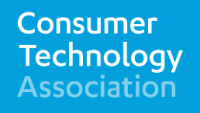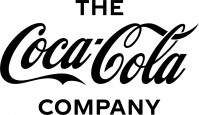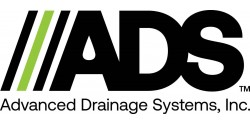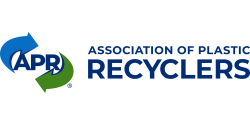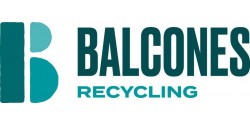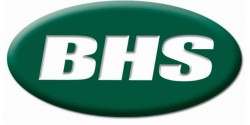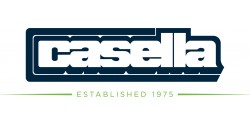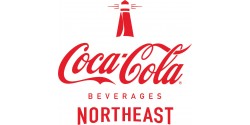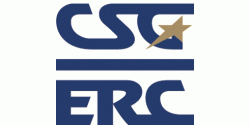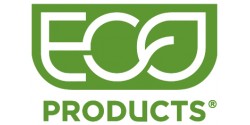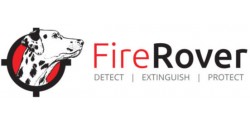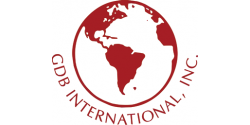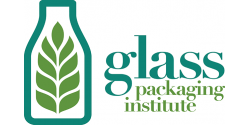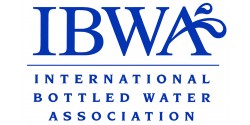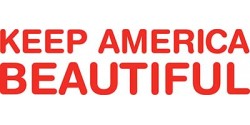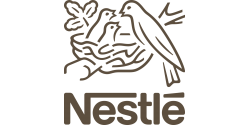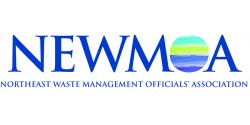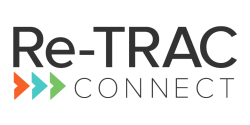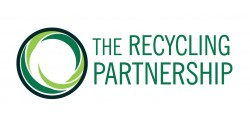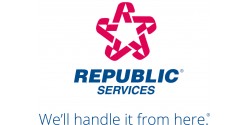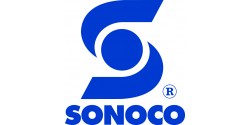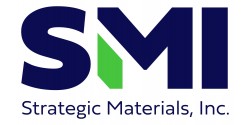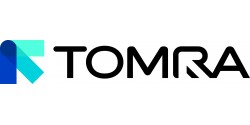April 2022
New & Renewing Memberships
Renewing Benefactor
Renewing Sustaining Members
- Casella Resource Solutions
- Council of State Governments/Eastern Regional Conference (CSG/ERC)
- Dart Containers
- ecomaine
NERC News
- NERC's Spring Conference is Here!
- Upcoming Webinars – Food Waste Reduction, Extended Producer Responsibility Strategies for Gas Cylinders, & Purchasing Standards for Low Carbon Concrete
- State Electronics Challenge Awards Announced
- NERC Developing Materials Reuse Deep Dive Forums
Newly Posted
State Updates
VERMONT
Advisory Member News
- Connecticut Communities Rewarded for Proactive Recycling Education
- National Database Provides Real-Time Comprehensive Source for U.S. Recycling Information
- Recycling Inclusion Fund Launches to Close Equity Gap within U.S. Recycling System
- Investing in the Future
- Foam Cycle Granted Patent for Recycling Polystyrene
- New Research from Reloop: Reimagining the Bottle Bill
- Plastic Recyclers Elect New Board of Directors for 2022
- NRRA Conference Early Registration until April 15
-
Chittenden County Ranks Among Top Waste-Busting U.S. Communities
Membership is key to NERC's regional and national commitment to sustainable materials management. We thank renewing Benefactor the Consumer Technology Association (CTA), as well as renewing Supporting Members:
- Casella Resource Solutions
- Council of State Governments/Eastern Regional Conference (CSG/ERC)
- Dart Containers
- ecomaine
Thank you to everyone for supporting NERC.
NERC News
NERC’s Spring Conference is Here!
Join us April 12 – 13 for NERC’s Virtual Spring Conference. The agenda is focused on Seeking Circularity with Non-Traditional Solutions. Don’t miss your chance to be part of the discussions about recycling’s pressing issues—Mergers & Acquisitions; Ecodesign; Agricultural Plastics; the Sustainability of Batteries; Making Diversity, Equity & Diversion Part of Your Operations; and Construction & Demolition Debris.
Eligible for NHDES, PROP and Rutgers NJ CEUs
| Conference Sponsors |
||
| Silver Sponsor |
||
| Bronze Sponsors |
||
 |
||
 |
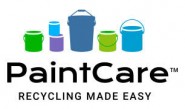 |
|
Conference Contact: Mary Ann Remolador
Upcoming Webinars – Food Waste Reduction, Extended Producer Responsibility Strategies for Gas Cylinders, & Purchasing Standards for Low Carbon Concrete
NERC and NEWMOA have several joint webinars in the coming months.
 Preventing & Reducing Wasted Food: Success Stories Webinar - April 20 - 1 eastern
Preventing & Reducing Wasted Food: Success Stories Webinar - April 20 - 1 eastern
There are many opportunities for commercial and institutional generators to reduce their food waste. This webinar, co-hosted by NERC and NEWMOA, will feature information on available tools and strategies for these generators. The presenters will share case studies highlighting effective approaches as well as lessons they have learned. They will also highlight available tools for measuring food waste generation and tracking progress. Presenters will be:
- Coryanne Mansell, Center for EcoTechnology
- John Short, IV., PHOOD
The webinar will include a half hour for Q&A.
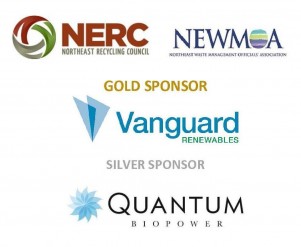
Extended Producer Responsibility for Gas Cylinders - May 3, 1 Eastern
Extended producer responsibility (EPR) proposals for managing used gas cylinders are emerging in the U.S. This webinar will cover the growing problem of discarded gas cylinders, why EPR policies are a solution, the results of a recent report covering this topic by a major producer, and how the EPR programs in Canada are working.
Presenters include:
- Jennifer Heaton-Jones, Housatonic Resources Recovery Authority
- Peter Hargreave, Policy Integrity Inc.
- Annie Lane, Worthington Industries
- Mary Cummins, Resource Productivity & Recovery Authority (based on Ontario)
The free webinar will include a half hour for Q&A.
Purchasing Standards for Low Carbon Concrete - June 1, 1 eastern
Concrete is a critical building material. However, the cement binder used in concrete is responsible for 8% of CO2 emissions. This webinar will explore concrete options with lower greenhouse gas emissions, and the growing number of purchasing specifications that state and local governments are using to give preference for these alternatives. Presenters include:
- Jordan Palmeri, Oregon Department of Environmental Quality (OR DEQ) – “Low Carbon Concrete: Lessons from Oregon”
- Kate Simonen, University of Washington – “Buy Clean Policy & Low Carbon Concrete”
- Dorian Bailey, The Port Authority of New York & New Jersey – “Clean Construction: Low Carbon Concrete”
The webinar will include about a half hour for Q&A
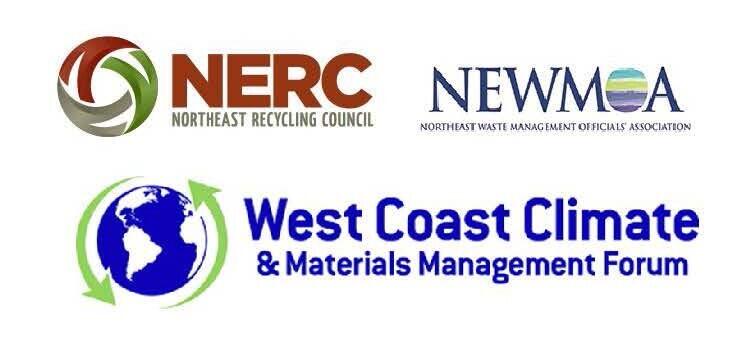 State Electronics Challenge Awards Announced
State Electronics Challenge Awards Announced
The State Electronics Challenge (SEC) recognized 15 Partners for their outstanding work in electronics stewardship in calendar year 2021. SEC Partners were eligible for one of three recognition levels – Bronze, Silver, or Gold - based on completion of SEC program requirements. Congratulations to all of the winners!
Calendar Year 2021 Award Winners
|
SEC Partner |
Recognition |
Lifecycle Phases |
|
Borough of State College, Pennsylvania |
Gold |
Purchasing, Use, & End-of-Life Management |
|
Centre County Recycling & Refuse Authority, Pennsylvania |
Gold |
Purchasing, Use, & End-of-Life Management |
|
City of Corvallis, Oregon |
Gold |
Purchasing, Use, & End-of-Life Management |
|
City of Fort Collins, Colorado |
Gold |
Purchasing, Use, & End-of-Life Management |
|
City of La Crosse, Wisconsin |
Gold |
Purchasing, Use, & End-of-Life Management |
|
City of Maplewood, Minnesota |
Gold |
Purchasing, Use, & End-of-Life Management |
|
City of Providence, Rhode Island, School Department |
Gold |
Purchasing, Use, & End-of-Life Management |
|
Manitou Springs School District, Colorado |
Gold |
Purchasing, Use, & End-of-Life Management |
|
New York State Energy Research and Development Authority (NYSERDA) |
Gold |
Purchasing, Use, & End-of-Life Management |
|
Ball State University, Indiana |
Silver |
Purchasing & End-of-Life Management |
|
City of Columbia, South Carolina |
Silver |
Purchasing & End-of-Life Management |
|
City of Keene, New Hampshire |
Silver |
Purchasing & Use |
|
State of Maryland |
Silver |
Purchasing & End-of-Life Management |
|
Maryland Department of Transportation |
Silver |
Purchasing & End-of-Life Management |
|
Upper Merion Township, Pennsylvania |
Silver |
Purchasing & End-of-Life Management |
Previous award winners are listed on the State Electronics Challenge website. For more information about the State Electronics Challenge, contact Lynn Rubinstein.
NERC Developing Materials Reuse Deep Dive Forums
NERC is working with a national Planning Committee to develop a series of moderated, in-depth discussion forums about material reuse, entitled: Material Reuse Deep Dive Forums. The Forums are intended to be in-depth virtual discussions about a range of topics related to material reuse as practice, policy and advocacy. (Any related subject matter will be considered.)
By material reuse, we are referring to the intentional compound usage of durable goods, including: construction materials, consumer and household items, electronics, books, textiles, and fixtures and furnishings.
The Forum Planning Committee consists of the following people: Diane Cohen of Finger Lakes Reuse, Nancy J. Meyer of Community Forklift, Heather Trim of Zero Waste Washington, Pam Howland of Old Window Workshop, Justin Green of Big Reuse, and Adrienne Farrar Houël of Greater Bridgeport Community Enterprises.
If you are a reuse practitioner and would like to share your thoughts about the specific content for the Forums, please fill out a Brief Survey.
Reuse Forums Contact: Mary Ann Remolador
Newly Posted
NERC Releases Update on Increased Capacity to Use Recycled Paper
The Northeast Recycling Council's (NERC) has published the latest update to its Summary of Announced Increased Capacity to Use Recycled Paper report. This update reflects continuing progress to use more recycled paper in North America. More than half of the projects are completed and others are moving towards their projected opening dates. Download the most recent report: Summary of Announced Increased Capacity to use Recycled Paper Updated March 2022
This update includes projects at 28 mills, of which 17 have been completed. The 17 completed projects include four new mills. When NERC first published this list in November 2018, it included new capacity at 17 mills, of which three projects were completed.
The list of additional recycled paper capacity includes new paper mills, expansion of existing capacity at packaging mills and conversions of printed paper machines at existing mills to produce packaging paper (e.g. from newsprint to packaging). The list also includes several mills that are now producing recycled fiber pulp for export in addition to making packaging paper. It also includes a mill designed to use food contaminated paper from commercial sources.
The majority of new capacity increases in this list are for mills producing linerboard and corrugated medium. They will use old corrugated containers (OCC), often-called “cardboard boxes”, as their feedstock. They are unlikely to use mixed paper, whether derived from residential or commercial recycling programs, unless their stock preparation system allows for its use. However, up to half of these mills plan to use mixed paper although it is likely to be a minor input. Several mills, however, plan to consume significant amounts of residential mixed paper (RMP) which is collected at curbsides throughout the country. Two of those mills are now operating. Because the price for mixed paper tracks that of old corrugated containers, increased capacity and market value for old corrugated containers normally increases the price paid for residential mixed paper.
Whether or not all of the new capacity is built depends on overall economic circumstances and demand for the final products. Announcement of a new mill does not guarantee it will be built due to the high costs of siting, permitting and building a new paper mill. Total announced new capacity, if all projects are completed, will use more than 8 million tons per year of OCC and mixed paper.
NERC has been reporting on national investment in paper recycling infrastructure since November 2018. The report has been updated eight times.
For further information, contact Lynn Rubinstein, NERC Executive Director or Chaz Miller, Chair of the NERC-NEWMOA Regional Recycling Markets Committee.
State Updates
Honoring James “Buzz” Surwilo, over 30 year veteran of Vermont DEC
We are deeply saddened to share the news of the death of Buzz Surwilo on March 3, 2022. The people of Vermont lost a dedicated and one of a kind public servant, with decades of work in DEC’s Solid Waste Management 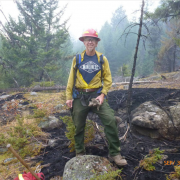 Program. Buzz had a unique diversity of skills, he did landfill sampling and monitoring, enforcement, worked with the public, worked on tire and asphalt shingle testing and pushed for alternative beneficial uses for these products as well as C&D materials. He was also a wildlands firefighter and regularly volunteered in the his community at the annual tire swap, the senior center, and various youth programs.
Program. Buzz had a unique diversity of skills, he did landfill sampling and monitoring, enforcement, worked with the public, worked on tire and asphalt shingle testing and pushed for alternative beneficial uses for these products as well as C&D materials. He was also a wildlands firefighter and regularly volunteered in the his community at the annual tire swap, the senior center, and various youth programs.
This news video highlights Buzz’s ability to promote reuse and recycling with C&D projects.
Buzz also wrote this article for a family member’s Art of Manliness website, which is a good glimpse into the intrinsic goodness that was Buzz. “Doing Good vs. Doing Nothing”.
Advisory Member news
Connecticut Communities Rewarded for Proactive Recycling Education
Congratulations to Wilton Go Green and City of Middletown, CT for their participation in the inaugural Community Education Award, sponsored by the Carton Council of North America. Launched in 2021, the program strives to foster improved resident communications surrounding recycling, with a special focus on food and beverage cartons. Communities were required to show that their websites accurately and clearly defined carton recycling, along with providing at least two other examples of communications and/or marketing activities conducted during the year that promote recycling.
National Database Provides Real-Time Comprehensive Source for U.S. Recycling Information
The Recycling Partnership has announced that it has developed a National Recycling Database, offering a comprehensive source for local recycling information across the U.S. This first-of-its-kind database, and the community outreach and product design tools based on this data, will empower households, manufacturers, retailers, brands, policymakers, environmental organizations, and government officials to understand how individual recycling programs are conducted, what materials are recyclable at the local level, and ultimately how to improve packaging recyclability.
The U.S. recycling system is not a unified or governmental entity, but rather a network of 9,000+ separate local recycling programs. Each individual program has specific parameters for which materials can be recycled, and municipalities collect recyclables in different ways. This is the first time that a systematic search of community programs has been completed and aggregated into a database that will be able to answer questions for consumers, companies, and recycling professionals, such as “Is this container recyclable in my town?”, “How do we design packaging for recyclability?”, and “How can we improve recycling in my community?” The Recycling Partnership’s National Database contains continuously updated data that will make it possible to answer these questions and more through a suite of tools that are currently under development.
With generous support from Apple, The Recycling Partnership created the first database that indicates what materials are accepted for recycling based on specific community programs, versus general information about what’s recyclable in an area. This complex database incorporates research of all local U.S. recycling websites with communities of over 2,500 households (97% of the U.S. population) and a custom neural network that captures local recycling changes as they occur. With this first-ever resource, the country is taking a bold step towards the innovative system of the future. A video showing how the database works can be found here.
The Recycling Partnership is actively working to deliver a series of digital tools that will harness the breadth and depth of the database for multiple audiences. The first offering will be a chat-bot tool – available this Spring through both The Recycling Partnership’s website and other online channels – that will answer household recycling questions to address common confusion (e.g., “Is my yogurt container recyclable in my community?”). The Recycling Partnership will also use the database in tandem with its recent Pathway to Circularity Recyclability Framework, which supports companies in taking action to ensure their product is recyclable. Though some packaging may require further innovation, the database will allow for the recyclability of these packages to be communicated in real-time to consumers. Given the power of the National Recycling Database, The Recycling Partnership envisions multiple opportunities to collaborate with communities, App creators, and other partners. As tools are released, The Partnership will be engaging community and industry partners to get feedback on the data and input on future offerings.
The Recycling Partnership currently uses the database to target investments in strategic ways, focusing on communities that most need support. Ultimately, the National Recycling Database will fuel the transformation of today’s U.S. recycling system into a system of the future, allowing:
- Consumers to access trustworthy local recycling information;
- Local recycling program coordinators to convey updated and correct recycling information to residents;
- Retailers and brands to design packaging for maximum recyclability;
- Material producers to determine steps to overcome impediments to recyclability;
- Policymakers at the state and federal level to determine what is accepted for recycling at the local level.
“We are thrilled to share this powerful database that offers a hyperlocal and a high-level view of the U.S. recycling system at any given moment,” says Aaron Burman, VP of Data & Analytics. “We’ve built a state-of-the-art neural network to detect changes in community websites, but this is really just the data foundation for a suite of tools that will help drive circularity throughout the U.S. economy.”
“Advancing a circular economy requires concerted efforts and focus at all levels of the recycling supply chain,” explains Sarah Dearman, VP of Circular Venture. “The National Database will enable us to strategically affect package design, convey real-time recyclability information, and target action to improve the recycling system where it is needed most so that we can build a circular packaging system of the future together in an informed, cohesive manner.”
To watch a video demonstration of the National Database, click here.
Recycling Inclusion Fund Launches to Close Equity Gap within U.S. Recycling System
The Recycling Partnership recently marked the official launch of the Recycling Inclusion Fund, a unique funding stream to address racial disparities and systemic challenges in the U.S. waste and recycling industries.
According to The Partnership’s 2021 Paying It Forward report on the state of the U.S. recycling system, 4 in 10 single-family residents lack equitable recycling access – equating to more than 40 million people who do not have the same access to recycling as they have to their trash service. That number increases to 7 in 10 for those who live in a multifamily property or rural community. With awareness that Black, Indigenous, and People of Color (BIPOC) have historically been underserved and under-supported in their communities, the Recycling Inclusion Fund aims to provide the resources and tools residents need to live a more sustainable life.
“This work addresses a pressing need within the industry – using our robust data and research, we can transform the system to amplify the power we know exists in communities of color,” explains Jessica Levine, Diversity and Inclusion Manager and founder of the Recycling Inclusion Fund. “This initiative is changing the way we understand, approach and address system inequalities in recycling.”
The Recycling Inclusion Fund directs contributions from committed partners to three key focus areas:
- Research to identify the state of recycling access and participation, barriers and needs in BIPOC communities across the U.S.
- Infrastructure and education improvements to reach and empower BIPOC populations with recycling access and resources that meet their needs.
- Leadership and training opportunities in the sustainability sector granted through The Recycling Partnership for recent BIPOC college graduates.
Since initial conception, seven funding partners have agreed to support Recycling Inclusion Fund initiatives – 3M, Arconic Foundation, The Coca Cola Company, Cox Enterprises, Kroger’s Zero Hunger Zero Waste Foundation, Procter & Gamble and TAZO.
Multiple projects are already underway, including foundational research to determine barriers to access and community-specific needs in the U.S., as well as a multifamily recycling project in the City of Orlando that delivers multi-lingual, culturally appropriate education materials to the city’s BIPOC residents. The Partnership is also launching the Fellowship Through Partnership (“FTP”) program in 2022, providing career training opportunities to diverse candidates within the waste and recycling industry.
“Cox Enterprises is committed to ensuring that all people have the ability to contribute to sustainability efforts,” says Meredith Lindvall, Director of Recycling & Waste Diversion at Cox Enterprises. “This partnership helps us to continue to care for the BIPOC communities we serve, while providing access and education to the resources needed to create a sustainable and healthy lifestyle for all.”
The Recycling Inclusion Fund is a crucial component of The Recycling Partnership’s long-term strategic objectives to transform the U.S. recycling system and activate a circular economy. To learn more about the supporting the Recycling Inclusion Fund or other Partnership initiatives, visit recyclingpartnership.org.
Investing in the Future
Casella Waste Systems, Inc. continues to invest in and advance its integrated solid waste, recycling, and resource management services across the northeastern United States on behalf of its customers and communities with the recent announcement of several acquisitions.
In July 2021, Casella announced that it acquired Willimantic Waste Paper Co., Inc. Willimantic provides residential, commercial, and roll-off collection services in eastern Connecticut and serves over 30,000 customers. In addition, Willimantic operates a rail-served construction and demolition process and waste transfer facility, a waste transfer station, a single stream recycling facility, and several other recycling operations.
On March 1, 2022, Casella also announced the acquisition of Northstar Pulp & Paper Company. Northstar has served as a leading resource management company located in Springfield, Massachusetts focused on recycling processing, brokerage services, and collection across the northeast for industrial, institutional, and commercial customers. The talented staff at the newest Casella location brings more than 100 years of industry experience and provides the Company with more opportunities to expand its recycling services to local customers and beyond.
“We are very excited about these recent acquisitions, as their operations and services integrate well across our footprint and provide a great opportunity to expand services to customers,” said John W. Casella, Chairman and CEO of Casella Waste Systems, Inc. “We continue to selectively invest in expanding our resource management services to industrial, institutional, and commercial customers as leading organizations strive to reduce their environmental footprint. Our acquisition pipeline remains robust, and we believe that there is continued opportunity to increase cash flow across our footprint through execution of our growth strategy.”
Foam Cycle Granted Patent for Recycling Polystyrene
Foam Cycle, the first foam packaging recycling system designed to be placed at outdoor municipal recycling drop-off centers, was recently issued a Utility Patent by the United States Patent and Trademark Office. The patent outlines a  “method and system of recycling polystyrene waste”. (Patent No.: US 11,241,695)
“method and system of recycling polystyrene waste”. (Patent No.: US 11,241,695)
Foam packaging, also known as Styrofoam, is one of the most plentiful, yet least recycled plastics in existence today. With packaging waste shifting from retailers to direct home delivery, foam packaging waste is too large to be placed in a curbside container and is not accepted by most single-stream recycling facilities. Foam Packaging waste joins a long list of other hard-to-recycle materials that cannot be collected at the curb, such as mattresses, tires, rigid plastics, metals and electronics. When dropped off at a recycling collection center equipped with a Foam Cycle system, foam packaging is able to be recycled.
The Foam Cycle system is designed as an encapsulated “plug and play” system to collect, recycle and repurpose foam packaging waste (e.g., food and pharmaceutical shipping coolers, electronics, TV, furniture packaging). When foam packaging waste is processed through the now-patented Foam Cycle system, 98% of the air is safely released and 2% of the polystyrene plastic is extruded, resulting in a 90-1 densification. Densified polystyrene foam, called ingots, has a very high resale value and is used in many industries to make new products, such as picture frames, RV panels and home insulation. Many of these finished products can be recycled again, resulting in a closed-loop recycling system.
The Foam Cycle unit can also process and recycle foam foodservice products (e.g., egg cartons, meat trays, cups, plates, takeout clamshells). Since foodservice foam is dropped off at a municipal recycling drop-off center by area residents and not placed in a curbside container, food service foam comes into a recycling facility 95% clean and ready to be recycled.
Once a Foam Cycle system is purchased, leased, or rented, Foam Cycle’s expert team of industry professionals will provide onsite support. Our team will explain, educate and train each municipal site location on the proper use of the system’s densifier and which foam materials can and cannot be recycled.
According to Foam Cycle company spokesperson Renee Garrin, “Foam Cycle’s future growth and larger environmental impact will occur when we make our recycling system known and available to municipal recycling drop-off centers throughout the country. In order to achieve this goal, Foam Cycle will be looking to partner with one of the nation’s largest waste and recycling haulers. This partnership would allow Foam Cycle access to hundreds of the company’s recycling professionals, many of which have existing municipal contacts and relationships.”
New Research from Reloop: Reimagining the Bottle Bill
As part of a three-year project Reimagining the Bottle Bill, Reloop North America has released brand new research that shows how modernizing deposit return systems (DRS, or "bottle bills") in the Northeast states of Connecticut, Maine, Massachusetts, New York, and Vermont can: 1. deliver significant environmental benefits, 2. save cities and taxpayers money and 3. work for all stakeholders.
Here are some of the top-line findings. Achieving high-performing DRS across the region would:
- Reduce regional greenhouse gas emissions by about 550k metric tons, the equivalent of taking 121,000 cars off the road each year
- Save cities & towns $111 million - $158 million each year
- Create more than 2,700 local jobs
- Satisfy 34% of the material needed nationwide to fulfill recycled content needs: advancing closed loop recycling for beverage containers in ways that curbside systems, even if enhanced, cannot
- Stabilize system costs, by keeping per container system cost to just 1-3.6 cents
- Enable a scalable refillables market
Learn more at #BottleBillReimagined: https://bottlebillreimagined.org
Plastic Recyclers Elect New Board of Directors for 2022
The Association of Plastic Recyclers (APR) recently announced its newly elected Executive Committee and Board of Directors, to lead the organization for 2022. Roxanne Spiekerman of PreZero US has been elected Chair for the upcoming year, with Greg Janson of Granite Peak Plastics and Eric Targgart of Custom Polymers serving as Vice Chair and Treasurer respectively.
The APR membership elected the following new members to the board for 3-year terms:
- Nicole Janssen, Denton Plastics
- Maite Quinn-Richards, Closed Loop Partners
- Tom Frantz, Technimark
They join APR’s existing Board Members: John Caturano, Nestlé Waters North America; Dawn Gaines, Mohawk Industries; Tony Moucachen, Merlin Plastics; Scott Saunders, KW Plastics; and Julie Zaniewski, Dow.
“As the only North American trade association focused exclusively on plastics recycling, APR is pleased to elect a Board that represents a variety of roles within the value chain with the direct knowledge and experience to respond aggressively to industry challenges,” commented Steve Alexander, President & CEO of APR. “We greatly appreciate their commitment to the success of plastics recycling and lead our industry in these challenging times.”
The APR Board of Director’s priorities for the coming year include ensuring the needs of the plastics recycling industry are considered on Capitol Hill and across the states, working with the FTC on updates to the Green Guides, maintaining APR’s role as a global leader in design, testing and recyclability requirements, as well as expansion of the APR Design® Guide for Plastics Recyclability and Training Programs.
"I am honored to be elected as Chair of the APR Board of Directors. The challenges our industry faces will require rapid mobilization, and this team is aligned and ready to act. It's time to make a meaningful and verifiable impact on the plastics pollution problem. This includes a collective effort from consumers, brands, the recycling industry, as well as the local, state and federal governments,” commented Roxanne Spiekerman, Vice President, Business Development at PreZero US and APR Board Chair. “I believe we should measure success through material demand growth, virgin material disruption and verifiable metrics associated with recyclability, recycling, and recycled content. This also includes rethinking our overall narrative on plastics and incorporating all methods of waste-diversion, including reuse. We must be focused on making the greatest and most immediate impact on plastic waste.
NRRA Conference Early Registration until April 15
Join the Northeast Resource Recovery Association (NRRA) for their Recycling Conference & Expo, which will be held in person on May 16 & 17 in  Manchester, NH. NRRA’s Conference brings together hundreds of attendees from New England and beyond to discuss municipal recycling and waste reduction. The conference agenda includes over a dozen workshops, including Landfill 101: An Introduction to Burying Trash, Solar Panel Recycling and a Circular Economy, Curbside Food Scrap Collection and Composting, Federal Funding Programs for Recycling Operations, and Affecting Recycling and Reuse Change in Your Town. The conference will take place at the DoubleTree by Hilton Manchester Downtown Hotel in Manchester, NH both days with some workshops available remotely via live stream. Registration is now open. Register by Friday, April 15 for early bird pricing!
Manchester, NH. NRRA’s Conference brings together hundreds of attendees from New England and beyond to discuss municipal recycling and waste reduction. The conference agenda includes over a dozen workshops, including Landfill 101: An Introduction to Burying Trash, Solar Panel Recycling and a Circular Economy, Curbside Food Scrap Collection and Composting, Federal Funding Programs for Recycling Operations, and Affecting Recycling and Reuse Change in Your Town. The conference will take place at the DoubleTree by Hilton Manchester Downtown Hotel in Manchester, NH both days with some workshops available remotely via live stream. Registration is now open. Register by Friday, April 15 for early bird pricing!
Chittenden County Ranks Among Top Waste-Busting U.S. Communities
Chittenden County households and businesses kept an estimated 57% (by weight) of all their commonly generated “stuff,” including construction and demolition (C&D) waste, out of the landfill in 2020. That’s according to CSWD’s 2020 Diversion & Disposal Report, which draws on multiple data points to estimate how much solid “waste” is generated within Chittenden County each year, and where it all ends up.
CSWD estimates that by keeping resources out of the landfill-bound trash and diverting them instead to be reused, recycled, or composted, District members prevented nearly 5,000 tractor trailers from needing to make the 142-mile round-trip journey from Chittenden County to the landfill in Coventry during 2020.
In addition to the avoided noise, traffic, and wear and tear on roads through our communities, that represents more than:
- 125,000 gallons of diesel fuel not used by those tractor-trailers
- 164,000 metric tons of CO2 emissions avoided through diversion (the equivalent of taking 35,000 cars off the road, or conserving 18 million gallons of gasoline)
“Everyone who lives, works, and plays in Chittenden County should be proud of their efforts at preventing and reducing the tons of ‘waste’ we send to the landfill each year,” said CSWD Executive Director Sarah Reeves.
Even when heavy construction waste is removed from the equation, households and businesses still reached 50.4% diverted from the landfill, exceeding 50% for the first time since 1993 when CSWD started tracking this data. To put this in perspective, here is how CSWD’s Diversion Rate compares with those reported by other US communities recognized for high-performing waste reduction and diversion programs:
- Seattle (2019): 54%
- San Francisco (FY21): 51%
- Portland, OR, Metro (2019): 46%
Another remarkable achievement noted in CSWD’s 2020 Diversion & Disposal Report is that the county-wide recovery rate just for “blue-bin” recyclables climbed to a remarkable 81.5% in 2020, up from an already high 78.7% in 2019. Most communities do not invest in the studies needed to estimate this rate, so it is difficult to make comparisons. However, in their 2020 State of Curbside Recycling Report, The Recycling Partnership estimates that communities with curbside recycling programs average a 61.5% rate of recovery for “blue-bin” recyclables.
“We’re energized by the opportunities to build on such a solid foundation,” said CSWD's Reeves. “It will be exciting to see how much more of the remaining 50,000 tons of landfill-bound resources we can capture with CSWD’s commitment to continued education and our anticipated investments in future programs and 21st-century facilities.”
CSWD’s full 2020 Diversion & Disposal Report and the CSWD FY21 Annual Report are available online.


